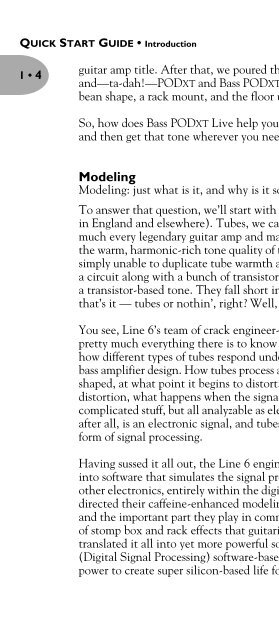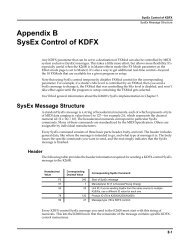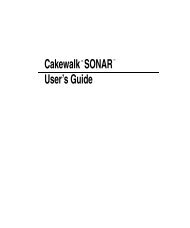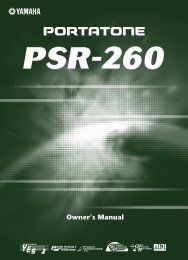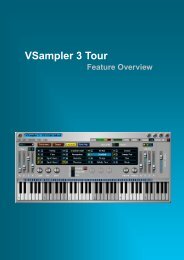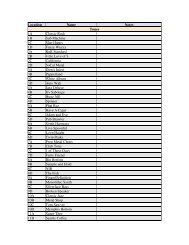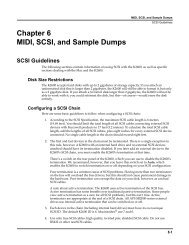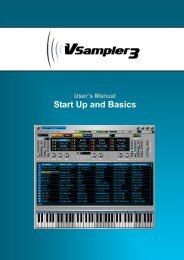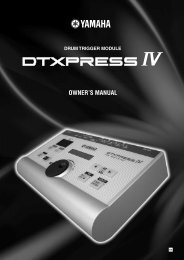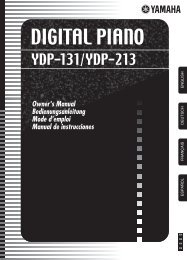Line 6 Bass POD xt Live User Manual - MIDI Manuals
Line 6 Bass POD xt Live User Manual - MIDI Manuals
Line 6 Bass POD xt Live User Manual - MIDI Manuals
- No tags were found...
You also want an ePaper? Increase the reach of your titles
YUMPU automatically turns print PDFs into web optimized ePapers that Google loves.
QUICK START GUIDE • Introduction1 • 4guitar amp title. After that, we poured the same magic elixir into the classic <strong>POD</strong>and—ta-dah!—<strong>POD</strong>XT and <strong>Bass</strong> <strong>POD</strong>XT were born. It’s now available in the originalbean shape, a rack mount, and the floor unit that you are enjoying.So, how does <strong>Bass</strong> <strong>POD</strong>XT <strong>Live</strong> help you create a bass tone that is out of this world,and then get that tone wherever you need it? Easy! It’s…ModelingModeling: just what is it, and why is it so important?To answer that question, we’ll start with tubes (better know as “valves” to our friendsin England and elsewhere). Tubes, we can all agree, are the heart and soul of prettymuch every legendary guitar amp and many treasured bass tone rigs, and are key tothe warm, harmonic-rich tone quality of that gear. Solid state devices (transistors) aresimply unable to duplicate tube warmth and performance. And “hybrids” — a tube ina circuit along with a bunch of transistors — are really a vain attempt at warming upa transistor-based tone. They fall short in any comparison to a 100% tube circuit. Sothat’s it — tubes or nothin’, right? Well, not any more....You see, <strong>Line</strong> 6’s team of crack engineer-musicians has spent years understandingpretty much everything there is to know about tube-powered gear, including exactlyhow different types of tubes respond under various conditions typical of guitar andbass amplifier design. How tubes process an input signal, how the signal is colored andshaped, at what point it begins to distort, the quality and characteristic of thedistortion, what happens when the signal gets to other parts of the system —complicated stuff, but all analyzable as electronic data. A guitar or bass pickup output,after all, is an electronic signal, and tubes and all the rest are really just a complexform of signal processing.Having sussed it all out, the <strong>Line</strong> 6 engineers translated all this arcane knowledgeinto software that simulates the signal processing of guitar and bass amps’ tubes andother electronics, entirely within the digital domain. Cool, huh? The <strong>Line</strong> 6 crew alsodirected their caffeine-enhanced modeling attention to a study of speaker cabinetsand the important part they play in communicating great tone. And the great varietyof stomp box and rack effects that guitarists and basses use to juice things up. Theytranslated it all into yet more powerful software, and it’s this revolutionary DSP(Digital Signal Processing) software-based modeling technology that gives <strong>Line</strong> 6 thepower to create super silicon-based life forms like <strong>Bass</strong> <strong>POD</strong>XT <strong>Live</strong>.


